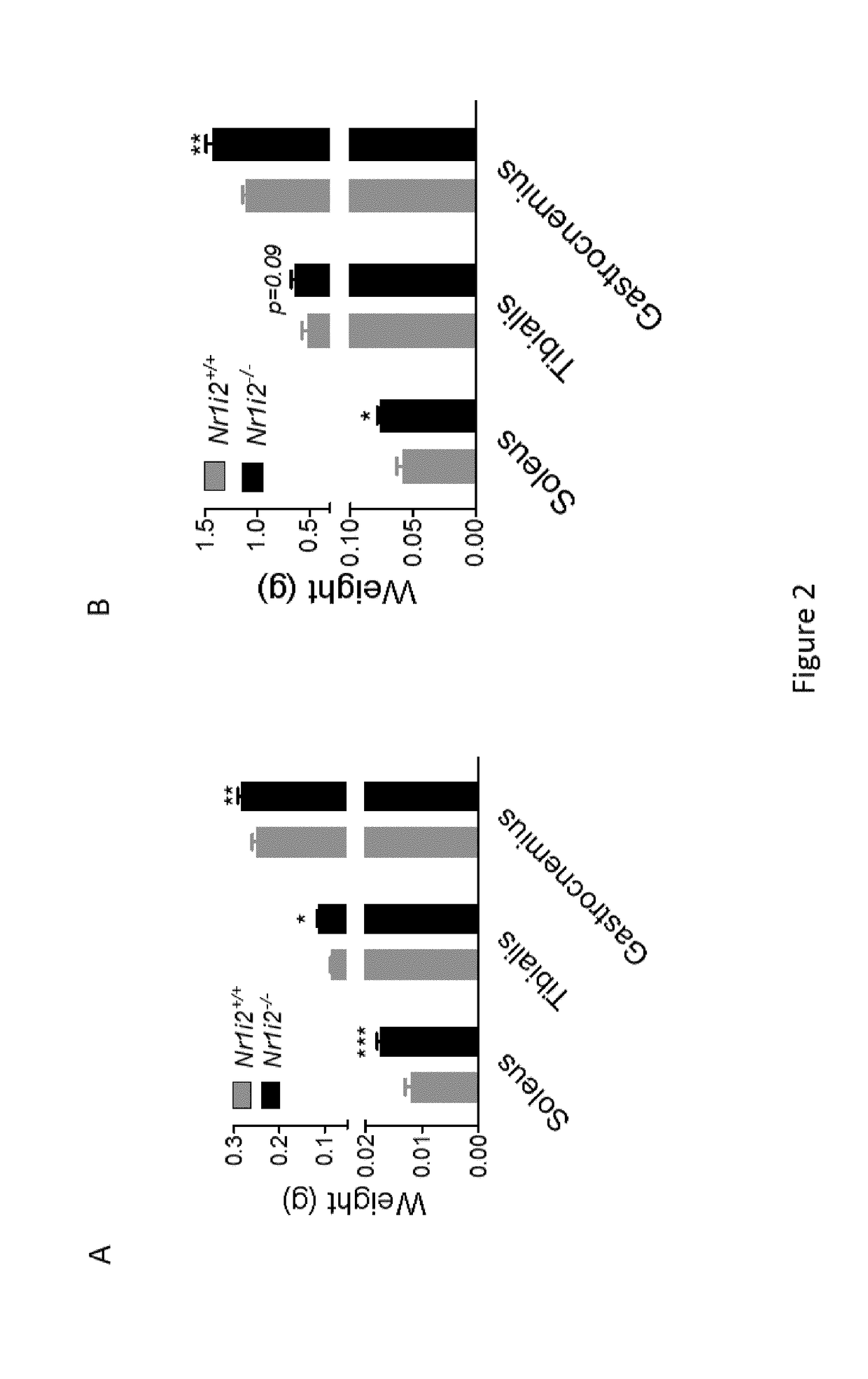Novel therapeutic use of fgf19
a technology of fgf19 and fgf, which is applied in the direction of drug composition, peptide/protein ingredients, muscular disorders, etc., can solve the problems of poor response to chemotherapy, untreated condition, and decreased survival, so as to prevent and/or treat muscle loss, increase muscle fiber size, and improve survival
- Summary
- Abstract
- Description
- Claims
- Application Information
AI Technical Summary
Benefits of technology
Problems solved by technology
Method used
Image
Examples
example 4
Results on Human Muscle Cells
[0219]To explore the direct role of FGF15 / 19 on skeletal muscle, the effects of FGF19 in vitro in primary human muscle cells were investigated.
[0220]When FGF19 is added at both physiological and pharmacological doses during the differentiation process of myoblasts to myotubes, or directly to myotubes, the area of the resulting myotubes is significantly enhanced (FIG. 4A)
[0221]FIG. 4B shows images of the myosine staining of myotubes, allowing the estimation of the myotube area.
example 5
esults Obtained on Mice after Injection of FGF19
[0222]To validate in vivo the role of FGF15 / 19 in muscle mass development, we treated normal control mice with a daily injection of recombinant human FGF19, which is biologically active in mice and more stable than its murine counterpart Fgf15.
[0223]One hour after subcutaneous injection, plasma levels of FGF19 increased to 17.8±1.2 ng / ml in FGF19-treated mice whereas plasma FGF19 was not detectable in vehicle-treated mice (not shown).
[0224]In FIG. 5, white bars show the results obtained without FGF19 treatment, grey bars show the results obtained in FGF-19 treated mice.
[0225]After seven days, body weight gain and food intake of FGF19- and vehicle-treated mice were similar (results not shown), but compared to vehicle-treated mice, mice receiving FGF19 showed a significant enlargement of the size of the soleus fibers (FIG. 5) both in young (3 week-old, FIG. 5A) and in adult (18 week-old, FIG. 5A′) mice. The weights of the measured muscle...
example 6
esults Obtained on Animal Model of Dexamethasone-Induced Muscle Atrophy
[0227]C57BL / 6 mice (23-week-old) were treated with dexamethasone (25 mg / kg) and dexamethasone plus FGF19 (0.1 mg / kg) for 14 days. As negative controls, mice were treated with a pharmaceutically acceptable excipient designated as “vehicle”.
[0228]White bars represent the results obtained in vehicle-treated mice, grey bars represent the results obtained in dexamethasone-treated mice, and stripped bars represent the results obtained with dexamethasone and FGF19-treated mice. Distributions are analyzed using Kolmogorov-Smirnov test with P<0.01.
[0229]As it is well known by the man skilled in the art, dexamethasone-treatment induces a state of muscle atrophy (Gilson et al.).
[0230]After fourteen days of treatment, the muscle weight (FIG. 6A), the size of tibialis muscle fibers (FIG. 6B), the mean fiber area (FIG. 6C) and the grip strength (FIG. 6D) of the mice are evaluated.
[0231]Evaluation of the grip strength is realiz...
PUM
| Property | Measurement | Unit |
|---|---|---|
| Mass | aaaaa | aaaaa |
| Size | aaaaa | aaaaa |
| Strength | aaaaa | aaaaa |
Abstract
Description
Claims
Application Information
 Login to View More
Login to View More - R&D
- Intellectual Property
- Life Sciences
- Materials
- Tech Scout
- Unparalleled Data Quality
- Higher Quality Content
- 60% Fewer Hallucinations
Browse by: Latest US Patents, China's latest patents, Technical Efficacy Thesaurus, Application Domain, Technology Topic, Popular Technical Reports.
© 2025 PatSnap. All rights reserved.Legal|Privacy policy|Modern Slavery Act Transparency Statement|Sitemap|About US| Contact US: help@patsnap.com



